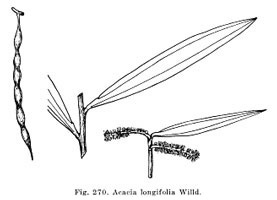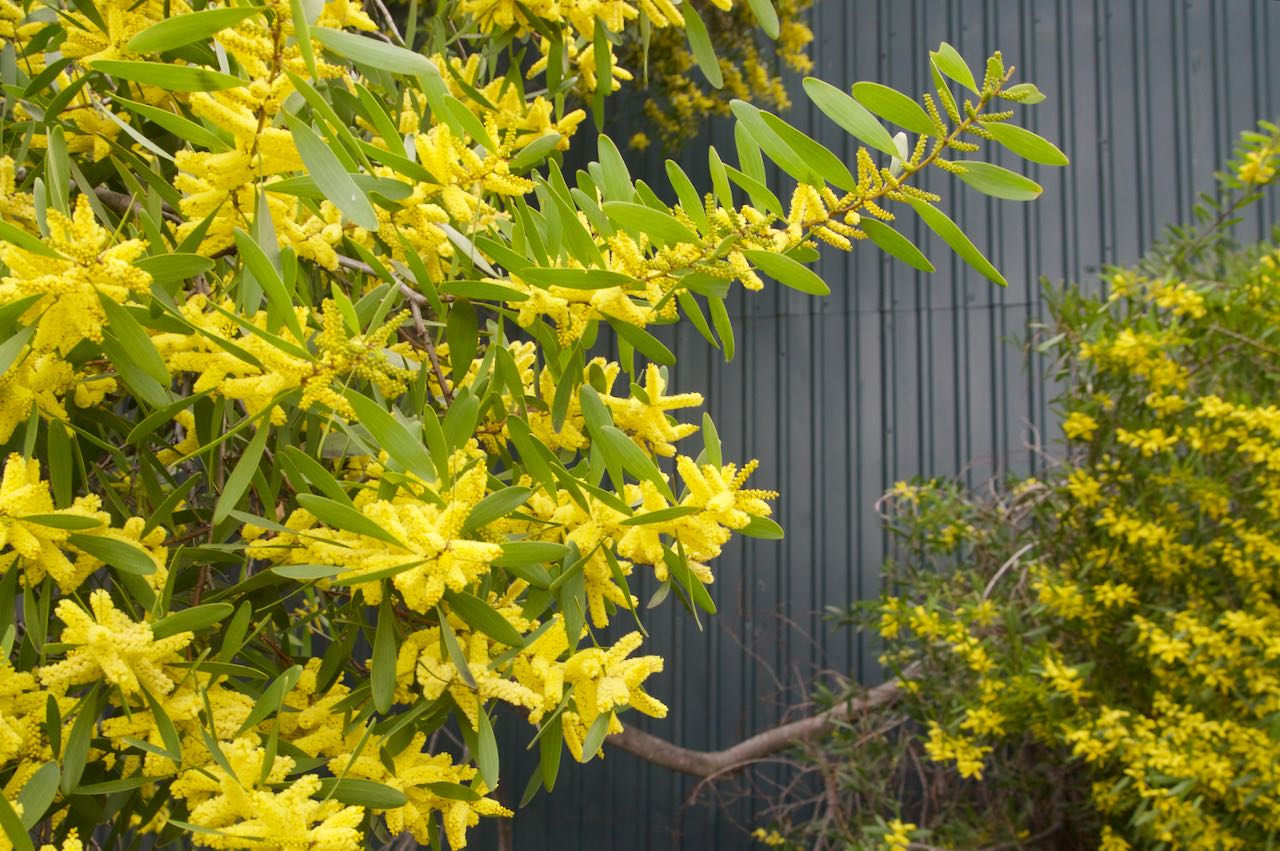Acacia longifolia
 Sydney golden wattle
Sydney golden wattle

A multi-branched spreading shrub or tree, Sydney golden wattle is often used as fast-growing hedge or screen. Its 3–6 inch elongated phyllodes are similar to those of blackwood acacia (A. melanoxylon) but a lighter green; its flowers are quite different, though: a vivid yellow and clustered in spikes an inch or two long. Both species bloom in March.
The phyllodes have a few longitudinal veins, which can help distinguish it from other acacias such as A. retinodes (no longer present on campus) that have only one prominent vein. A gland is near the base on one edge. Its roasted seeds were reportedly consumed by Tasmanians in the 18th century.
Sydney golden wattle is clustered along Knight Way at Campus Drive and nearby. It has grown to form of small trees at the narrow garden featuring Australian and New Zealand plants at Bonair Siding, on the northeast edge of the parking lot. Three sizeable trees are opposite 770 Santa Ynez Street.
Acacias have been utilized to anchor sand dunes and help restore ecosystems. Sydney golden wattle was among the first trees planted during the creation of Golden Gate Park by engineer-designer William H. Hall, starting in 1871, along with blue gum (Eucalyptus globulus), Monterey cypress (Hesperocyparis macrocarpa), and Monterey pine (Pinus radiata), all of which could tolerate sand, salt wind, and summer drought. Horse-drawn scoops were first used to level and fill in the sparsely vegetated, windswept sand dunes. (They were also used for leveling Stanford’s Quad site by cutting along Escondido Mall and filling along what became Serra Street – now Jane Stanford Way – to create the descent to the Oval.) Hall planned to plant about twenty thousand trees those first two years; all would need to handle sand, salt wind, and summer dryness.
Name derivation: Acacia – Greek akis, a sharp point; longifolia – with long leaves.
About this Entry: Authored Feb 2025 by Sairus Patel.

